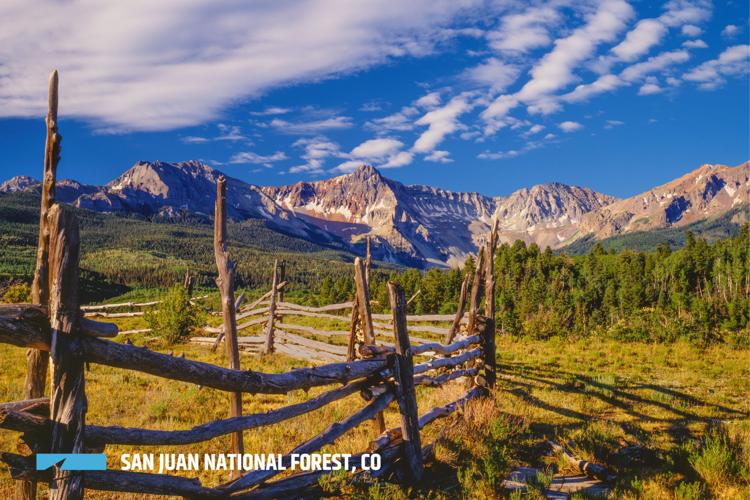Things To Do
The San Juans are Colorado’s largest mountain range, an unbroken sea of peaks stretching from the mountains west of Telluride all the way to the San Luis Valley. The 1.8-million-acre San Juan National Forest encompasses much of this range.
These are volcanic mountains, unlike some other Colorado chains. The volcanic rock is loose and erodes easily, giving these mountains their jagged, rugged appearance. These natural forces also pushed valuable minerals, including gold and silver, to the surface, and the San Juans were heavily mined.
Mining heritage still defines much of this national forest on the west side, north and northwest of Durango. Many of the popular four-wheel-drive roads that lace through the forest owe their existence to the mines, and touring old mine sites remains a popular summer activity.
But there are also huge chunks of the national forest that were too rugged for roads, too wild for mines. Much of this land is contained in the Weminuche Wilderness, Colorado’s largest wilderness area. This is a 488,000-acre blank spot on the road map. Many visitors get a taste of this wilderness from the Durango and Silverton Narrow Gauge Railroad or on short backpack trips into Chicago Basin, home of three fourteeners. But to truly experience the Weminuche takes days on the trail and nights camped around remote lakes or beneath towering peaks.
The west side of the forest, where the jagged peaks have earned the nickname “the American Alps,” is the more heavily visited. The Lizard Head Wilderness contains the namesake 13,000-foot rock that was once considered unclimbable, as well as three difficult fourteeners, the Wilson group.
As the mountains spread east they become more spread out. The largest unbroken stretches of tundra in Colorado can be found here. Through hikers on the Colorado Trail often describe terrifying hikes through thunderstorms and snow with no shelter. This is Colorado at its most remote.
The national forest reaches its eastern terminus at the Continental Divide near Wolf Creek Pass. Trails get more crowded, due to proximity to tourist town Pagosa Springs. Spruce beetles have decimated this area as well, giving the forest a brown, lifeless look.
These mountains are so deep and rugged, few venture far into this national forest in winter, except for on the lifts at Purgatory Resort, the lone ski area, 20 miles north of Durango.
Whether it’s in a Jeep or in hiking boots, a person could spend a lifetime exploring the San Juan National Forest. Better get started.
Pro Tips
Our Favorite Hikes
Other Places
Recommendended season(s): Year-round.
—R. Scott Rappold












(0) comments
Welcome to the discussion.
Log In
Keep it Clean. Please avoid obscene, vulgar, lewd, racist or sexually-oriented language.
PLEASE TURN OFF YOUR CAPS LOCK.
Don't Threaten. Threats of harming another person will not be tolerated.
Be Truthful. Don't knowingly lie about anyone or anything.
Be Nice. No racism, sexism or any sort of -ism that is degrading to another person.
Be Proactive. Use the 'Report' link on each comment to let us know of abusive posts.
Share with Us. We'd love to hear eyewitness accounts, the history behind an article.